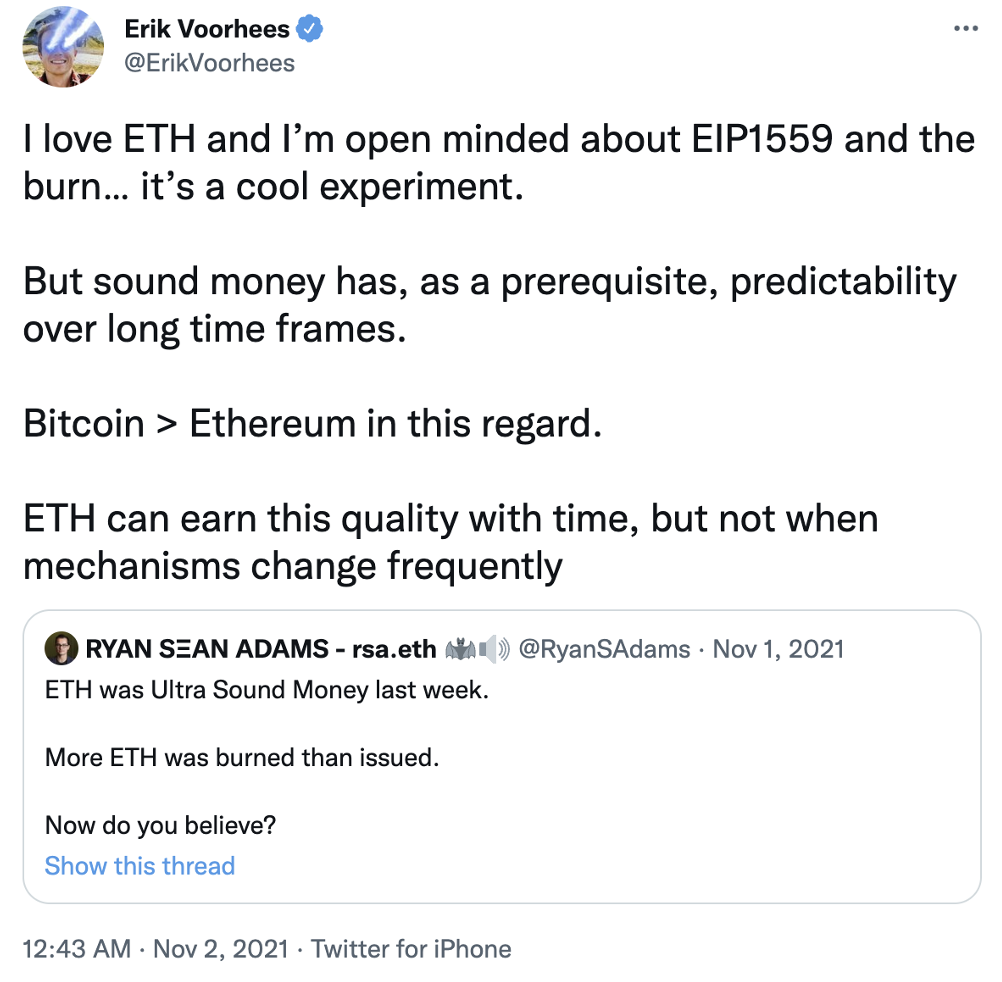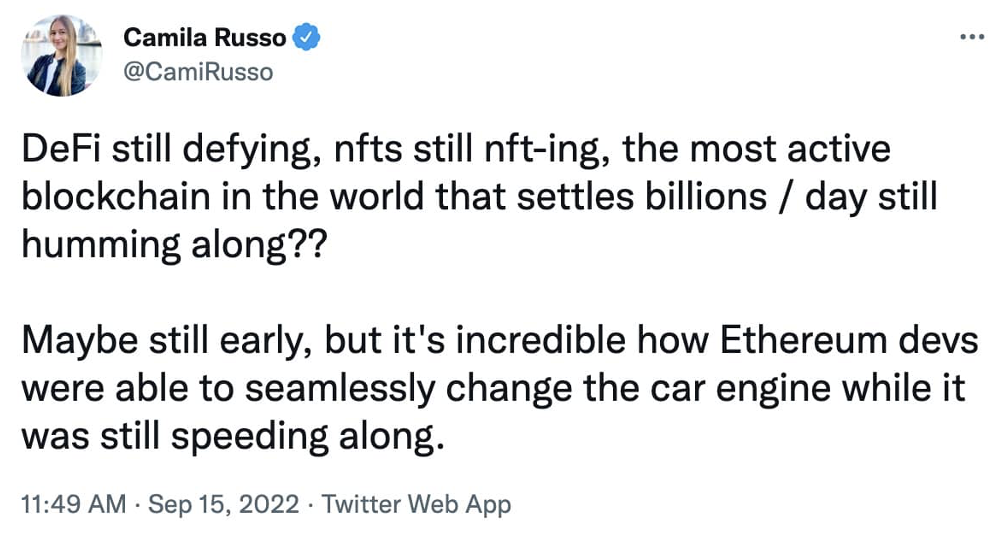By Frank Corva
Bitcoin (BTC) is boring compared to Ethereum (ETH) — and it’s supposed to be.
Comparing the two networks is like comparing apples to oranges. Or maybe oranges to apples is a better way to say it considering Bitcoin is often associated with the color orange.
The Bitcoin network is a thorough yet elegant protocol that allows for its native asset — Bitcoin (BTC) — to be used like digital cash in peer-to-peer transactions. And the Ethereum network is a smart contract platform on top of which decentralized applications (dApps) are built.
Some refer to Ethereum as “the world computer.” The native asset of the Ethereum network — Ether (ETH) — fuels the transactions on this global computer network.
However, the rules that govern the production of BTC are different than those that govern the production of ETH.
Bitcoin’s monetary policy is set in stone — or immutable code — which makes BTC a store of specific monetary values. Ethereum’s monetary policy is ever-changing, which makes ETH difficult to price.
Author’s note: Before continuing, I’d like to state that I hold both BTC and ETH, for different reasons.
Fixed supply vs. infinite supply
BTC’s supply is capped at 21 million. ETH’s supply isn’t capped at all.
When you look at the two assets through this lens, BTC resembles a precious metal, the supply of which is scarce. In contrast, ETH resembles a fiat currency, the supply of which is as plentiful as the powers that govern it would like it to be.
Money’s scarcity is one dimension of its soundness. Given we don’t know how scarce the supply of ETH is, it’s misleading for Ethereum developers and enthusiasts to classify ETH as “ultra sound money.”

BTC’s perfect scarcity is what makes it such an effective counter to fiat currency debasement.
As the British pound dramatically lost value against the U.S. dollar a few days ago, you’d have been hard-pressed to find people on Twitter yelling “Buy ETH! Fiat currencies are collapsing!”
Instead, they were urging the world to take out a BTC insurance policy against reckless fiat monetary policy.
Bitcoin’s sound monetary policy is one of the network’s core values.
Proof of work vs. proof of stake
Two weeks ago, the Ethereum Merge — or when the Ethereum network changed its consensus mechanism from proof of work (PoW) to proof of stake (PoS) — was all the rage in the world of crypto.
The fact that it went off without a hitch was a stunning technological feat; it was one of the most impressive software upgrades in the history of computing. Some even referred to it as replacing a jet engine mid-flight, or used similar analogies.

It would be intellectually dishonest to not acknowledge the accomplishment that is “the Merge.”
However, it would also be intellectually dishonest not to acknowledge that we have no idea how successful Ethereum will be as a PoS network in the long run, nor what that will mean for the price of ETH.
As a PoS network, Ethereum is now further under the thumb of regulatory agencies, especially in the US.
The U.S. Department of the Treasury’s Office of Foreign Asset Control (OFAC) can now very easily sanction the human transaction validators on the Ethereum network.
And it took SEC Chair Gary Gensler less than a day after the Merge to hint at the fact that he thinks that ETH resembles a security and should be under the SEC’s jurisdiction now that Ethereum employs a PoS consensus mechanism.
No one knows what increased regulatory oversight for Ethereum means for the network or for ETH.
Bitcoin, on the other hand, still operates under a PoW consensus mechanism, which doesn’t require voting from human validators.
Instead, the network relies on computing energy — a feature of the network, not a bug. It takes energy to produce sound money.
Another value of the Bitcoin network: Money should be hard to produce.
Inflation rate
Not only is Bitcoin’s supply set in stone, but so is its inflation schedule.
Every four years, the amount of BTC that will be produced through mining is halved. Some refer to this process as Bitcoin’s halving cycles or, more colloquially, its “halvenings”.
Ethereum hasn’t established a set inflation rate for ETH. The rules of how much ETH is created and/or burned continue to be modified.
Bitcoiners treasure the fact that BTC’s inflation schedule is set in code and isn’t subject to change.
The dependability of Bitcoin’s inflation schedule is yet another value of the Bitcoin network.
A finished product
Bitcoin can be a store of values because it’s a finished product, whereas the base layer for Ethereum is a work in progress.
Both the Bitcoin and Ethereum networks are incredible technological achievements and both BTC and ETH have value for different reasons.
But only BTC was designed in a way that makes it predictable and, therefore, a bit easier to price.
And no matter how the price of BTC fluctuates over time, its status as a store of values is irrefutable.
The views and opinions expressed herein are the views and opinions of the author and do not necessarily reflect those of Nasdaq, Inc.

